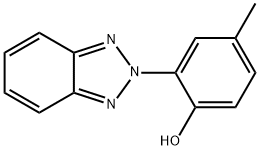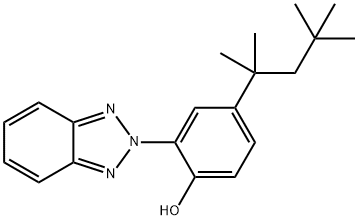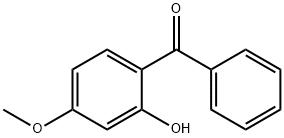2-Hydroxy-4-(octyloxy)benzophenone , 99% , 1843-05-6
Synonym(s):
[2-Hydroxy-4-(octyloxy)phenyl]phenylmethanone;2-Benzoyl-5-octyloxyphenol;4-(Octyloxy)-2-hydroxybenzophenone
CAS NO.:1843-05-6
Empirical Formula: C21H26O3
Molecular Weight: 326.43
MDL number: MFCD00027327
EINECS: 217-421-2
| Pack Size | Price | Stock | Quantity |
| 25G | RMB23.20 | In Stock |
|
| 100G | RMB52.80 | In Stock |
|
| 250g | RMB119.20 | In Stock |
|
| 500G | RMB217.60 | In Stock |
|
| others | Enquire |
PRODUCT Properties
| Melting point: | 47-49 °C(lit.) |
| Boiling point: | 424.46°C (rough estimate) |
| Density | 1.160g/cm3 |
| refractive index | 1.6000 (estimate) |
| Flash point: | 102℃ |
| storage temp. | Sealed in dry,Room Temperature |
| solubility | Chloroform (Slightly), Methanol (Slightly, Sonicated) |
| form | Solid |
| pka | 7.59±0.35(Predicted) |
| color | Off-White to Light Yellow |
| Specific Gravity | 1.160 |
| Merck | 14,6742 |
| BRN | 1915198 |
| InChIKey | QUAMTGJKVDWJEQ-UHFFFAOYSA-N |
| LogP | 7.360 (est) |
| CAS DataBase Reference | 1843-05-6(CAS DataBase Reference) |
| NIST Chemistry Reference | Octabenzone(1843-05-6) |
| EPA Substance Registry System | 2-Hydroxy-4-octyloxybenzophenone (1843-05-6) |
Description and Uses
Octabenzone appears as light yellow/yellowish crystals/fine powder and is odourless and freely soluble in benzene, n-hexane, and acetone; slightly soluble in ethanol; and very slightly soluble in ethane dichloride. Octabenzone is a light stabiliser with good performance, capable of absorbing the UV radiation of 240–340 nm wavelength with the characteristics of light colour, non-toxicity, good compatibility, small mobility, easy processing, etc. Octabenzone protects the polymer to its maximum extent and helps to reduce its colour. It can also delay the yellowing and impede the loss of its physical function. Industrial applications of octabenzone is very extensive and applied to PE, PVC, PP, PS, PC, organic glass, polypropylene fibre, ethylene-vinyl acetate, etc. Also, octabenzone has very good light-stability effect on drying phenol aldehyde, varnish of alcohol and acname, polyurethane, acrylate, expoxnamee, etc. The major uses include UV stabiliser, for example, polyethylene and polypropylene fibres.
HOBPs are UV absorbers for insulating plastics, which can be incorporated with active layers to increase the stabilization of organic solar cells (OSCs). It may be incorporated in parylene C films to enhance the light stability, which can be potentially used as a moisture transfer membrane for electronic boards and photovoltaics.
Safety
| Symbol(GHS) |  GHS07 |
| Signal word | Warning |
| Hazard statements | H317 |
| Precautionary statements | P280 |
| Hazard Codes | Xi,N |
| Risk Statements | 36/37/38-50/53-43 |
| Safety Statements | 26-36-61-60-36/37 |
| RIDADR | UN 3077 9/PG 3 |
| WGK Germany | 1 |
| RTECS | DJ1595000 |
| TSCA | Yes |
| HS Code | 29145090 |
| Hazardous Substances Data | 1843-05-6(Hazardous Substances Data) |
| Toxicity | LD50 oral in rat: > 10gm/kg |




